10 Cool Things to Do With Concrete in Your House
Concrete is an industrial stalwart, but its ascendance from cheap building material to cool component for a home’s best architectural features is giving product designers some novel inspiration. Concrete is now being used in housewares and furniture, fixtures and fittings, producing some unexpected concepts. In the lighting category, lamps and pendants are sporting pale-colored concrete shades. In kitchens, concrete is being poured to form weathered-looking countertops, to bring industrial flair to the heart of the home. Even in the sanctuary of the bathroom, tubs are being sculpted into stony cemented shapes so sculptural, they look like works of art. And in the outdoor arena, furniture, fire pits and crazy paving are all getting the hard-edged treatment.
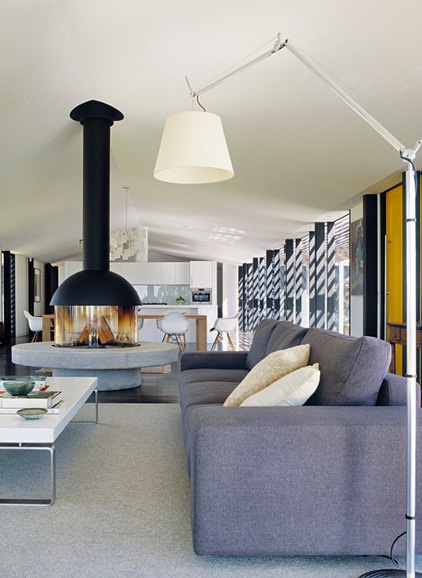
1. Fireplace. Exploiting the architectural potential of concrete, the design of this circular fireplace makes it a standout feature in this long, barn-shaped living room at the center of a contemporary farmhouse in rural Victoria. It has been worked into a round shape that features a wide ledge around its circumference for extra seating and cozy fireside chats, no doubt.
Quick fact: The precursor to concrete was a cement invented in about 1300 B.C. Middle Eastern builders discovered that the thin, wet coating of the baked limestone they used to coat buildings chemically reacted in the air to form a hard, protective surface.
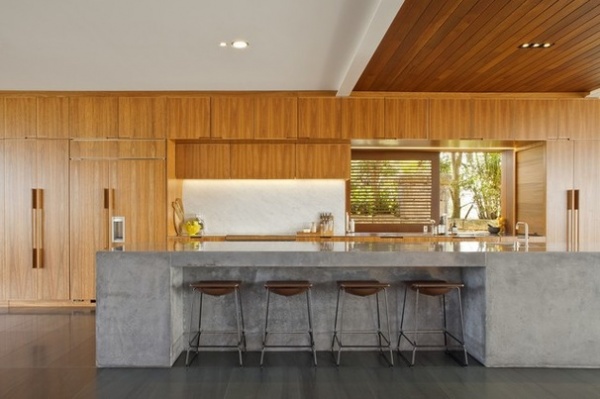
2. Kitchen counter. Apart from its slick, industrial look, a concrete kitchen can also be a seriously practical option for home cooks. Concrete countertops and work surfaces are hard wearing due to the durable nature of concrete. Some say concrete is prone to cracking, but this rarely occurs when handled by an expert. Even if a concrete surface does develop some fine cracks, various small blemishes on a concrete kitchen countertop look amazing and, together with the beautiful patina that occurs over time, give the surface the appearance of being well worked.
Another benefit of concrete in the kitchen is that because the concrete is molded into formwork, it can have spaces for sinks and other features precut. And although the island here looks a tad monolithic, it is in fact just a shell that has plenty of room underneath for drawers and cabinet storage.
Kitchen Counters: Concrete, the Nearly Indestructible Option
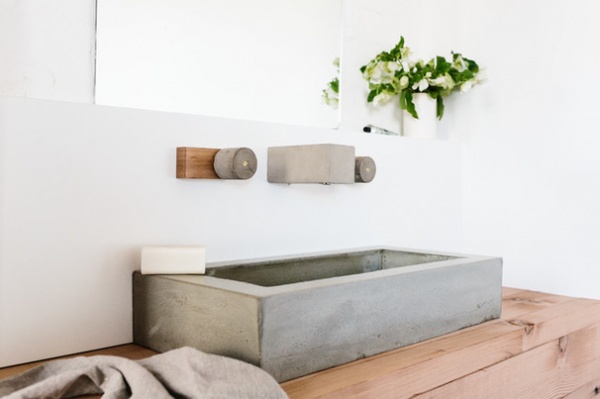
3. Sink fixtures. Tapping into the current trend of incorporating unconventional uses of concrete in interior design applications, designers are continuing to offer novel ideas, such as these bathroom sink fixtures.
Quick fact: Concrete has been used in the construction of many of the masterpieces of modern architecture. The malleability of the material has allowed architects to create the most amazing structures. Some notable landmarks include Le Corbusier’s Notre Dame du Haut, Frank Lloyd Wright’s Fallingwater, Oscar Niemeyer’s Brasilia and Tadao Ando’s Church of the Light.
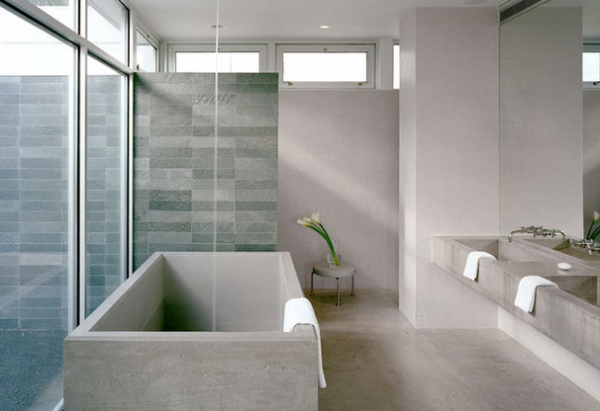
4. Custom tub. Make a sculptural statement with a concrete bath molded into the shape of your choice. Have the wet concrete shaded darker or tinted lighter to create a more unusual look. To finish, the bathtub should be highly polished inside and out to keep it watertight.
Quick fact: The Romans successfully used concrete to build all manner of large public works, including the Pantheon in Rome, as well as aqueducts, bridges, wharves and breakwaters. The concrete the ancient Romans used was quite different from the mix we use today. Theirs was more like cemented rubble!
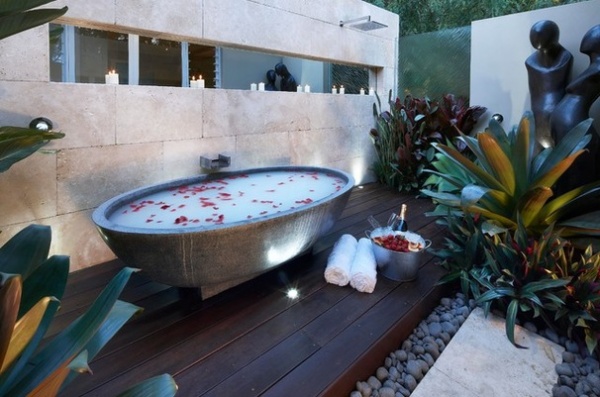
The beauty of concrete in the bathroom is that it nearly always evokes a minimalist feel and looks serene and inviting. It can be paired with either industrial or wood features to add interest and warmth.
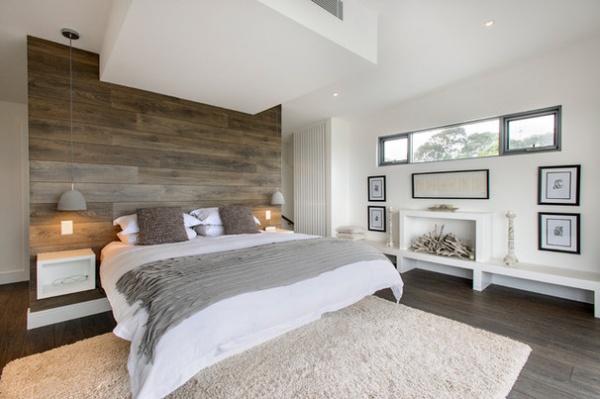
5. Bedside lamps. It may not be the first material you’d associate with modern lighting, but concrete lamps and pendants are leading the trend in concrete housewares, fixtures and fittings. Concrete lampshades are created via a mold, and then attached to other parts of the light that are fashioned from complementary materials such as wood or plastics. These are used for other “working” parts of the light, such as the housing for the electrical cord or the stand part of a desk or floor lamp.
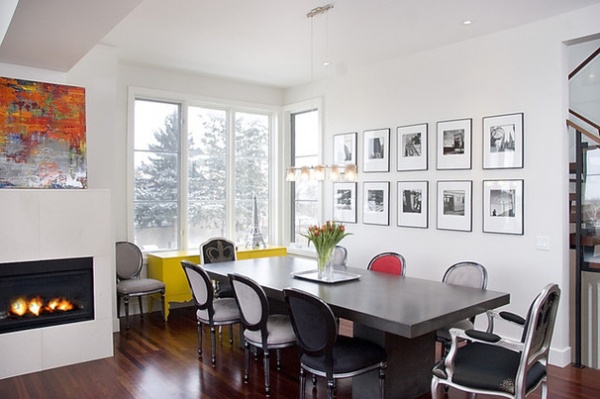
6. Dining table. Concrete tables are nothing new, but they are usually found outdoors, where they are known to weather well and provide a cheaper alternative to stone. Inside, concrete tables are considered too heavy to be useful, but if they are made using various methods and materials that lighten the load, the table’s weight (and bulk) can be dramatically reduced. A material often used to mix into the concrete for this gentler “reinforcement” is fiberglass, in addition to, and sometimes instead of, traditional steel rods.
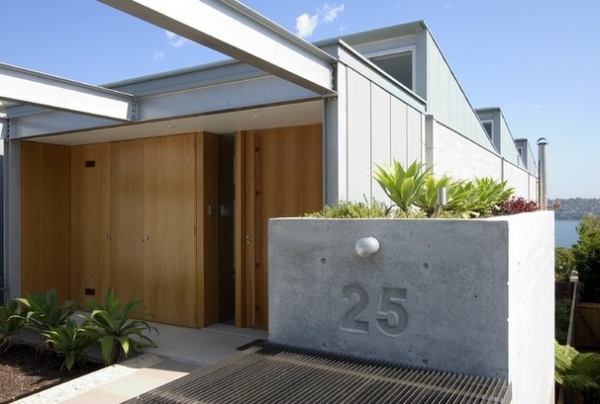
7. Front of house. Using concrete as part of the front entry is an all-in-one, cost-effective way to incorporate various features that would traditionally be separate. A concrete structure at the front of the home can act as an imposing sentinel flanking the entryway. This can have house numbers, a mailbox, entry lights, even welcoming planter boxes embedded into its form.
Quick fact: Concrete consists of three ingredients: cement, water and a stone aggregate, all of which are mixed together and left to dry to a rigid solid.
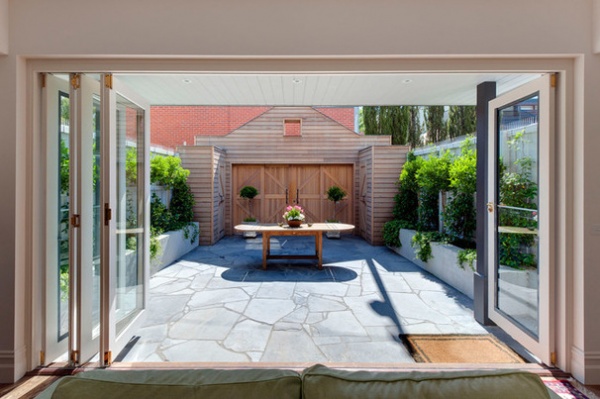
8. Crazy paving. The method of laying down irregular stone “tiles” to form a hard surface in the garden was popular in the middle of the last century, but it fell out of favor as wood decks and concrete slabs were considered to create a more ordered and attractive look. Now the seemingly haphazard retro style is making a comeback. Although the tiles are traditionally hewn from shale, sandstone or limestone, concrete crazy paving is starting to appear as a cheaper and sometimes more interesting alternative.
Outdoor Style: Creative Ways With Classic Concrete
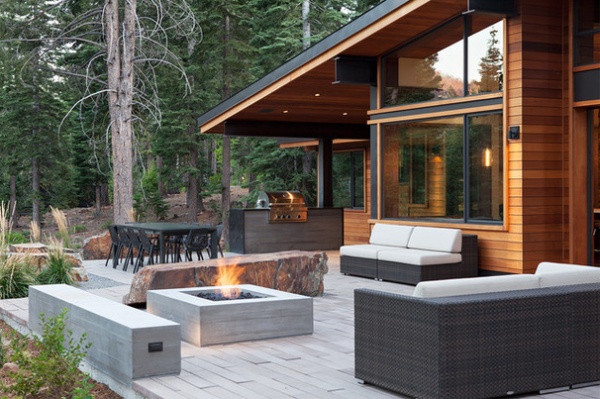
9. Outdoor fire pit. You won’t be able to move this fire pit around, but by installing it as a permanent fixture within a thickly walled concrete trough, you can light up a fire every night and know it’s safe.

10. Outdoor seating. Forget about storing the outdoor furniture under a cover to extend its life and protect it from extreme weathering. These outdoor concrete lounge chairs will stand the test of time no matter what Mother Nature throws at them. Place a brightly colored cushion on the seat for extra comfort.
Do you love concrete? Have you seen a novel way it’s been used as a design feature at home? Or do you know of any traditional housewares now made in concrete? Share your thoughts and photos in the Comments.
More:
Garden Walls: Pour On the Style With Concrete
Objects of Desire: Beautifully Individual Concrete Floors












